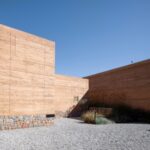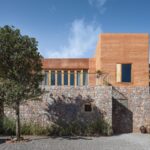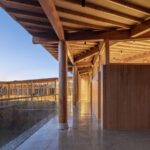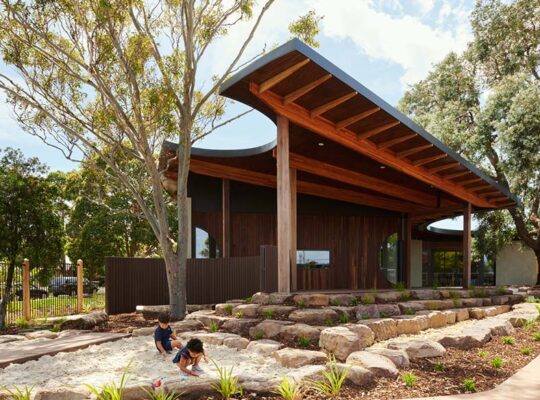Project Introduction
The Linden Centre Shaxi Community Campus, a collaborative effort between Anderson Anderson Architecture and Atelier FUN, is situated in a new national park in Shilong village, adjacent to the historic town of Shaxi in Yunnan, southwest China. Funded by the Development-Oriented Poverty Reduction Program for Rural China and managed by The Linden Centre, it encompasses community and cultural facilities alongside small visitor cabins aimed at fostering economic and cultural education.

Embracing Tradition Amidst Change
Shilong village, primarily home to the Bai ethnic minority, historically relied on activities like logging and subsistence agriculture. However, due to ecological concerns, these practices are no longer sustainable in the park, necessitating a shift towards tourism. The Linden Centre proposed a vision that combines traditional skills with modern construction methods to preserve cultural heritage while embracing new opportunities.

Design Approach
The project seamlessly integrates local materials and craftsmanship with international building standards, requiring innovative solutions to blend tradition with technology. Despite initial challenges posed by scars from recent construction and grazing damage, the architects strategically positioned the buildings within these scars, preserving the pristine landscape.
Harmonizing Old and New
Drawing inspiration from local building traditions, communal construction methods involving villagers were employed, combining traditional materials like stone, rammed earth, and timber with modern elements. The site’s scars, including those from a water reservoir and grazing, informed the campus layout, resulting in an organic formal logic reminiscent of traditional village construction.

Community Collaboration
Local villagers, accustomed to working together as a community, played a pivotal role in the construction process. Women and men collaborated on tasks like building stone foundations and rammed earth walls, embodying the spirit of shared work that fosters community and continuity across generations. Modern elements like glazing and reinforced concrete were added where necessary, maintaining the project’s integrity.

Fusion of Materials and Techniques
The campus’s stone groundwork, serving as terraces, streets, and foundations, connects different areas and creates a shared platform for communal spaces. A timber bridge spans the artificial pipeline ravine, linking cultural facilities on the east side with rammed earth dwelling clusters on the west. While some specialized services were sourced from Kunming, the majority of the work was carried out by the local village, fostering community integration and skill development.

In essence, The Linden Centre Shaxi Community Campus stands as a testament to the fusion of tradition and modernity, rooted in local culture yet embracing innovation to create a sustainable and culturally rich environment.

























